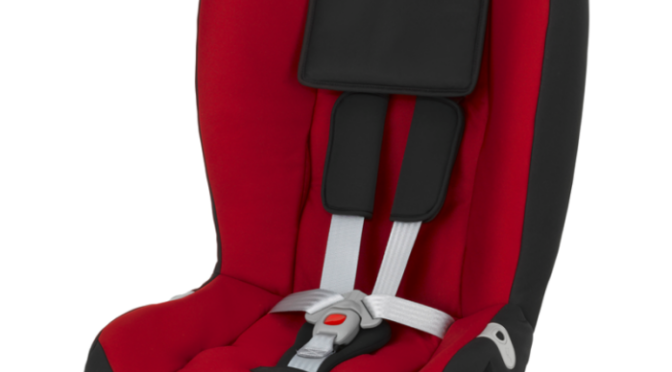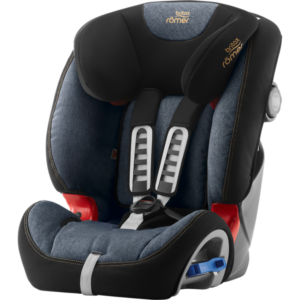
One of the most interesting facets of car seat safety involves the differences in cultural attitudes toward car seat usage and auto safety overall, which is reflected in the availability of different seats in different regions of the world. For example, Britax regularly sells car seats capable of rear-facing up to 55 pounds throughout Europe, particularly in the UK, Sweden, and Norway. However, they don’t sell any seats capable of rear-facing past 40 pounds in the United States as of November 2017, and this has been the case for years, despite the availability of such 55-pound rear-facing seats overseas for more than a decade. Why is that? And does it really matter? Let’s take a closer look at these questions today.
There’s (almost) no demand for 55-pound rear-facing in the United States
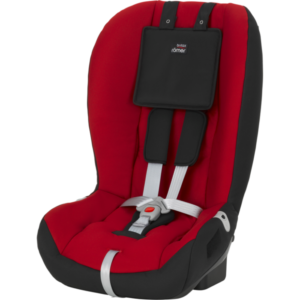
The primary reason why 55-pound rear-facing seats aren’t yet available in the United States is because there’s almost no demand for them. Car seat manufacturers don’t stay in business by making seats no one buys; there’s a large demand for rear-facing seats in Sweden and Norway, where most children rear-face until 4 to 5. However, in the United States, where most children are forward-facing by age 2, there’s much less demand for seats that allow kids to rear-face far beyond that.
There are definitely exceptions; as of today, there are 7 convertible car seats that allow children to rear-face until they hit 50 pounds: The Clek Fllo, the Clek Foonf, the Diono Rainier, the Graco Extend2Fit, the Graco Extend2Fit 3-in-1, the Graco 4Ever Extend2Fit, the Nuna Rava, the Safety 1st Advance EX 65 Air+, and the Safety 1st Grow and Go EX Air. However, only one of these existed when I started this blog in 2014, the Clek Foonf. We’ve made progress in raising awareness of the importance of rear-facing, and more parents are doing so in the US than ever before, but it’s still a very, very, very small market here compared to what’s the norm in Sweden.
It’s also important to note that while you can buy Swedish seats and import them to the US to use them with children on this side of the pond, this is illegal because Swedish seats aren’t legal for US use since they aren’t tested by the NHTSA. There are plenty of ways to get around the law if you’re interested in doing so for a number of things in life, but we’re focusing here on why such seats aren’t legally sold in the United States or Canada.
With that in mind, it’s important to note that just because we can’t rear-face past 50 pounds in the United States doesn’t mean our kids are leaving a lot of safety on the table compared to their Swedish siblings. In fact, the best rear-facing seats in the US have a lot in common with the best Swedish ones. Next we’ll take a look at four 55-pound rear-facing Swedish seats.
Which Swedish car seats rear-face until 55 pounds, and how do they compare to American seats?
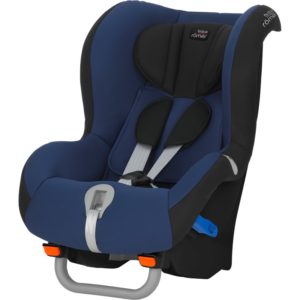
I recently wrote about how one of the most common Swedish rear-facing car seats, the Britax Max-Way, was not that different from extended rear-facing convertibles available in the US (e.g., the Clek Fllo or Diono Rainier). It’s one of four commonly sold 55-pound rear-facing car seats available overseas via Britax; three others are the Britax Hi-Way 2, which succeeded the Britax Hi-Way some years ago, the Britax Two-Way, a much older but still relevant design, and the Britax Multi-Tech III. Three of these seats rear-face from 20-55 pounds while one rear-faces from birth to 55 pounds. None of these seats are available in the US but all are readily available in Sweden and a number of other countries throughout Europe (e.g., via Britax Sweden). The manuals for these seats are typically available in English, Danish, Finnish, Dutch, and Swedish, reflecting sales in the UK, Denmark, Finland, the Netherlands, and of course, Sweden.
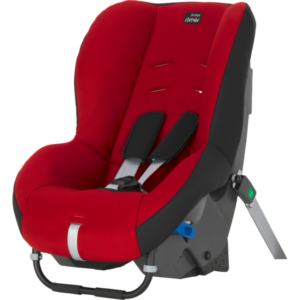
While all four of these seats may seem far more advanced, sophisticated, and yes, safer, than anything available in the US, it’s essential to note that the Swedes themselves don’t credit the seats with their exceptional safety record for the fewest children lost to car crashes per capita year after year. To the Swedes, the difference comes primarily from rear-facing. Indeed, if you look at the seats more closely, you’ll realize that, practically speaking, you can’t rear-face in them any longer than you can in the best American seats.
Really?
Yes! As with American seats, the usability of Swedish car seats is primarily limited by height instead of by weight, even though seats there, like seats here, are primarily marketed by height.
How long can Swedish car seats actually be used to rear face compared to the best US convertibles?
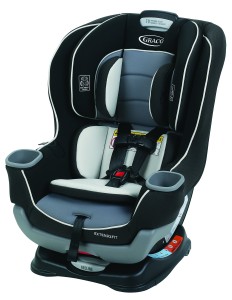
When it comes down to it, you can actually get about as much time rear-facing in the best US convertibles as you can from the best Swedish seats. Let’s compare the four above to some of their closest American counterparts.
The Britax Max-Way is a Group 1/2 seat designed for kids from 9 months to 6 years of age. It rear-faces (and only rear-faces) from 9-25 kg, or 20-55 lbs. It has a height limit of around 120 cm, or 47 inches.
The Britax Hi-Way II is a Group 0/1/2 seat designed for kids from birth to 6. It rear-faces from 0-25 kg, or 0-55 lbs. It has a height limit of around 110 cm, or 43 inches.
The Britax Two-Way is another Group 1/2 seat for kids between 9 months and 6 years. It rear-faces and forward-faces from 9-25 kg, or 20-55 lbs. It has a height limit of 125 cm, or 49 inches.
The Britax Multi-Tech III is a Group 1/2 seat aimed at kids between 9 months and 6 years. It can both rear-face and forward-face between 9-25 kg, or 20-55 lbs. It also has a height limit of 125 cm, or 49 inches.
According to growth charts from the Center for Disease Control (which are the same for girls and boys), a 50th percentile child won’t reach 50 pounds until 7 years and 25 kilograms (55 pounds) until approximately 7 years and 9 months. Height-wise, the child won’t reach 43″ until 5 and 49″ until 7 years and 5 months.
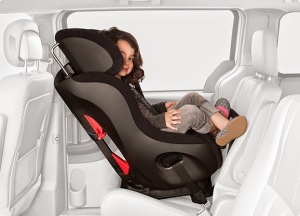
In other words, for a 55 pound seat with a 49″ height limit, height is the limiting factor for a typical child, and it limits a seat to 7 years and 5 months, and a 43″ height limit limits a seat to 5 years. There are several 50-pound seats in the US with 49″ height limits, including the Nuna Rava, the Safety 1st Advance EX 65 Air+, the Graco 4Ever Extend2Fit, the Graco Extend2Fit. The Diono Rainier tops out at 44″, which a 40th percentile child will reach by 5 years and 5 months. The Clek Fllo and Clek Foonf top out at 43″, which a 50th percentile child will reach by 5.
What this shows is that any of the 50-pound rear-facing seats currently available in the US will allow you to rear-face as long as you can with two of the four most common 55-pound rear-facing seats available in Sweden, and four separate 50-pound US seats sold in the US will match the rear-facing time an average child can get out of the two tallest 55-pound seats sold in Sweden. There are some unique situations (e.g., heavy, short children) where certain kids could potentially get more time from a Swedish seat than an American one by being too heavy for an American seat yet falling within the height limits, but these will be very, very rare situations. Practically speaking, if you want to rear-face until 4 or 5 or even 6 or 7, you don’t need a Swedish seat; you just need to make the most of an American one. Sort of like how you don’t need the newest cars to travel safely.
Does this mean we don’t need 55-pound rear-facing seats in the United States to keep our kids as safe as those in Sweden?
In a word, yes. Their incredibly low rates of child deaths come from a combination of factors including and beyond extended rear-facing, such as their much closer adherence to best practices in road design and driver behaviors than that found in the US. Swedes drive half as often as Americans, which automatically cuts the risk of death for children and adults alike in half. If we want numbers like those seen in Sweden, we can’t just rear-face and call it a day. As with most societal-scale changes, it’ll require societal-scale commitment. And the US shows no sign of lowering speed limits, reducing auto travel, and redesigning roads to make slower, safer travel a priority over faster, riskier transportation.
If you replaced every 55-pound car seat in Sweden with, say, Clek Fllos, they’d still have the lowest child death rates on the planet. Our seats are good enough. We just aren’t using them–and our driving culture and infrastructure aren’t helping.
Until we adopt societal-level changes, the secrets to keeping your family safe will continue to be found in choosing safe speeds, following best practices with car seats, and choosing safe roads. Don’t wait for the government or your neighbors to follow best practices, or you’ll be waiting an awfully long time.
 If you find my information on best practices in car and car seat safety helpful, you can buy my books here or do your shopping through this Amazon link. Canadians can shop here for Canadian purchases. Have a question or want to discuss best practices? Send me an email at carcrashdetective [at] gmail [dot] com.
If you find my information on best practices in car and car seat safety helpful, you can buy my books here or do your shopping through this Amazon link. Canadians can shop here for Canadian purchases. Have a question or want to discuss best practices? Send me an email at carcrashdetective [at] gmail [dot] com.

